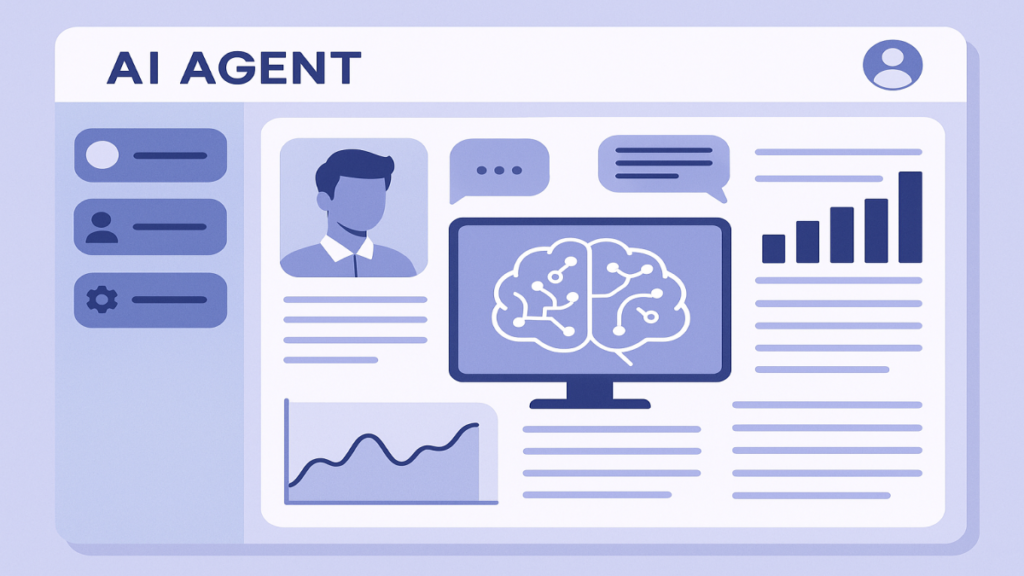How AI Agents Can Increase Your Staff Productivity up to 55%
Updated: November 1, 2025 · AEGIS Research Editorial
Peer-reviewed and large-scale field studies show consistent double-digit productivity gains today—and, in narrowly designed agentic workflows, 3–5× throughput is achievable. Below is what credible research says, by industry and function.
What’s Happening Right Now in the Job Market
Summary: AI is reshaping tasks more than replacing roles. Field trials show modest but reliable gains in broad knowledge work, while re-engineered, automation-ready workflows can see step-changes. Hiring shifts toward roles that can steer, supervise, and integrate these systems.
- Customer Support (call centers): +14% average productivity; +34% for novice reps (issues/hour). NBER/QJE RCT
- Software development: ~55% faster on scoped coding tasks (time-to-complete). GitHub Copilot RCT
- Consulting/pro services: +12% tasks, +25% faster, >40% quality in “in-frontier” work. Harvard/BCG
- Admin & public sector: ~26 minutes/day saved across drafting/meetings. UK Civil Service pilot
- Agentic workflows: 2–5× throughput when processes are redesigned for autonomous agents with guardrails. BCG follow-on; enterprise cases
Productivity Uplift by Industry/Function
Summary: Biggest, most reliable gains show up in support, scoped dev tasks, and structured consulting deliverables. Marketing and back-office see steady, compounding wins; agent orchestration unlocks outsized effects where handoffs dominate.
| Industry / Function | Observed Lift (Study Measure) | Labor Advantage | Notes |
|---|---|---|---|
| Customer Support / CX | +14% avg; +34% for novices (issues/hour) NBER/QJE | Faster resolution, skill-leveling; fewer escalations | High volume + strong KB = ideal first use case |
| Software Development | ~55% faster on scoped tasks (time-to-complete) GitHub RCT | Throughput lift; human review for correctness | Guardrails mitigate error/over-reliance risk |
| Consulting / Pro Services | +12.2% tasks; +25.1% faster; >40% quality (in-frontier) Harvard/BCG | Higher velocity & quality; boosts junior output | “Jagged frontier”: out-of-scope can degrade |
| Marketing / Content | ~5–15% function-level lift (spend-adjusted) McKinsey | Drafting, personalization, rapid iteration | Brand & factual QA remain essential |
| Admin / Public Sector | ~26 minutes/day saved (drafting/summaries) UK pilot | Fewer low-value admin hours; better service time | Training & fit strongly affect outcomes |
| Agentic Automations (L1 IT, invoice match, research pulls) | 2–5× throughput (cycle time & queue-clear) BCG; enterprise cases | Labor shifts from execution to oversight | Requires APIs, process redesign, guardrails |
Ranges synthesize late-2024/2025 studies and deployments; results vary by data quality, change-management, and governance.
Reduced vs. Reallocated Labor: What Actually Happens
Summary: AI strips drudgery first. Minutes saved on drafting, summarizing, and lookups compound into hours weekly. Most firms reallocate time to higher-value work—customer empathy, exception handling, strategy—rather than cutting headcount. Over-trust outside AI’s sweet spot can reduce quality without training and guardrails.
- Reduced Hours Routine tasks get faster—10–30% time reclaimed in many roles. WTI; UK pilot
- Reallocation Time shifts to higher-value work (e.g., QA, strategy). BCG; NBER/QJE
- Scope Expansion Teams take on work previously out of reach without proportional headcount growth. BCG 2024
- Risk Quality dips when tasks exceed AI’s “frontier.” Harvard/BCG
How to Realize 3–5× in Practice (Narrow Agentic Workflows)
Summary: Step-changes come from redesign, not add-ons. Pick a high-volume rules-based process, wire APIs, and let agents plan → act → verify → escalate. Run safe steps in parallel, cap privileges, and log every action. Raise autonomy as accuracy stabilizes; keep humans on exceptions.
- Select a high-volume, costly workflow (password resets, invoice coding, entitlement checks).
- Instrument & connect systems via APIs; centralize knowledge; log every agent action.
- Orchestrate agents: plan → retrieve → act → verify → escalate (parallelize where safe).
- Guardrails: confidence thresholds, spend limits, policy checks, human-in-the-loop for exceptions.
- Iterate: expand autonomy as metrics stabilize (cycle time, quality, rework).
Buyer’s Reality Check
Summary: Evidence is strongest in support, scoped dev tasks, and structured consulting; other domains are catching up. Measure outcomes with task-level metrics (issues/hour, time-to-complete, error rates), not headlines. Governance, training, and data quality determine whether pilots scale.
- Strong evidence: Support centers, scoped dev tasks, structured consulting deliverables.
- Emerging: Back-office ops, finance workflows, complex research.
- Measure: Track throughput, quality, rework, and cycle times.
Sources Glossary (Plain Citations)
- NBER / QJE (Call Center RCT): “Generative AI at Work” — +14% avg productivity; +34% for novices (issues/hour). NBER · QJE 2025
- GitHub Copilot RCT: ~55.8% faster completion on a scoped coding task. arXiv · GitHub
- Harvard / BCG Experiment: “Navigating the Jagged Technological Frontier” — +12.2% tasks, +25.1% faster, >40% quality (in-frontier). PDF · BCG
- Microsoft Work Trend Index (2024): Measuring AI at work; mixed but meaningful time savings. WTI
- UK Civil Service Copilot Pilot (2024): ~26 minutes/day saved on average. FT Coverage
- McKinsey GenAI Potential: Function-level productivity ranges; value rises with workflow redesign. Overview
Note: Studies use different metrics (time saved, output quantity, quality). We report both original measures and an intuitive “lift” interpretation.

